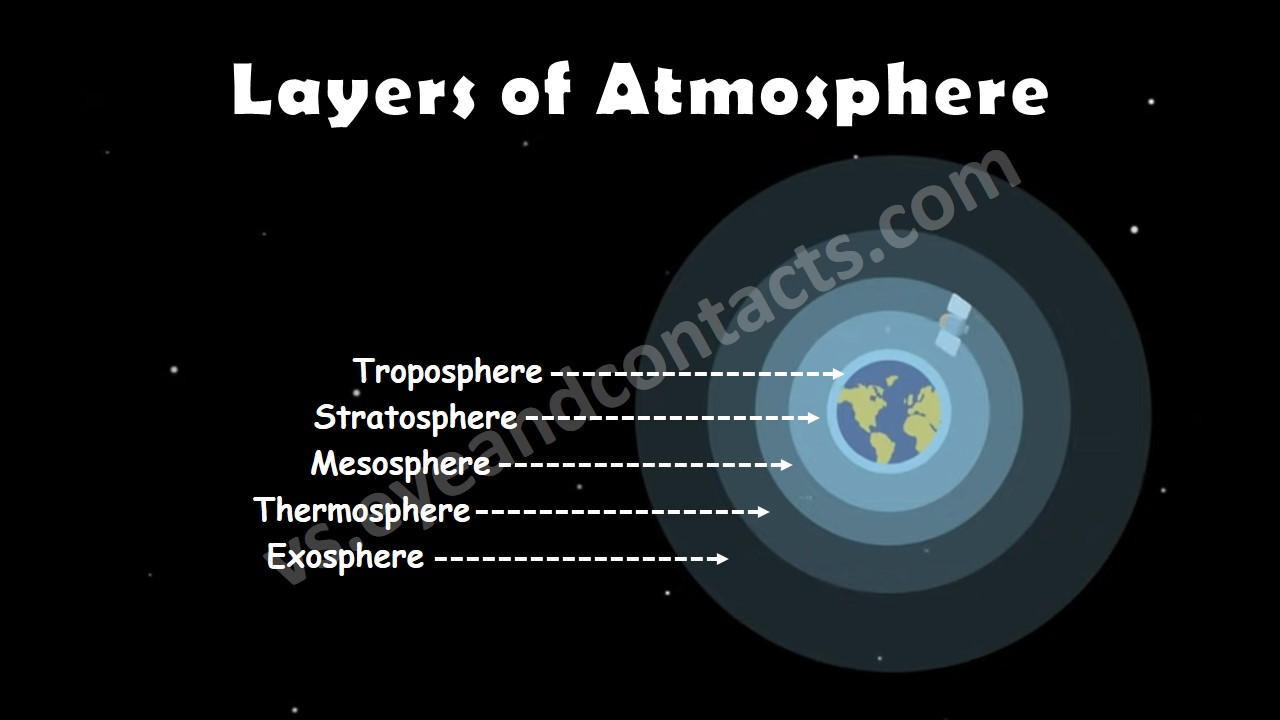Layers of Atmosphere

Troposphere is the layer where the weather occurs. This is the lowest atmospheric layer and begins at the surface of the Earth and extends out to about 4-10 miles. The temperature of the troposphere decreases with increase in altitude. Just so that you know, altitude is the height of an object or point in relation to the ground level.
Stratosphere is the second lowest layer of the Earth’s atmosphere. Here, the temperature rises with the rise in altitude. Also, here you will be able to find the Ozone layer which helps to absorb harmful UV (Ultraviolent) rays from the Sun. This is the layer where you will be able to find aeroplanes flying here as the Stratosphere is free from all weather disturbances. The Stratosphere extends to about 30-35 miles above the Earth’s surface.
Mesosphere is the layer where most meteors burn upon entry. The Mesosphere stretches up till 50 miles from the Earth’s surface.
The Thermosphere is the next layer and the air is very thin here. Temperatures are extremely hot in the Thermosphere. It extends up to 400 miles from the Earth’s surface. The lower part of this layer contains Ionosphere. Many atoms are ionized in this layer, and you will be able find electrical charges here!
Exosphere is the last layer and the air here is quite thin. It goes all the way up to 6200 miles from the Earth’s surface.
Did you know, Troposphere contains more 75% of atmosphere’s mass? And the Ions in the Ionosphere help to transmit Radio waves!
No comments:
Post a Comment